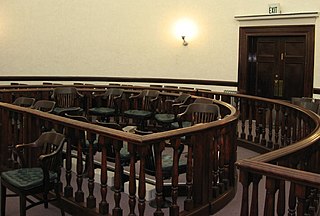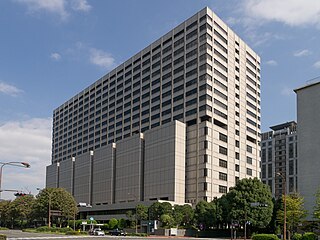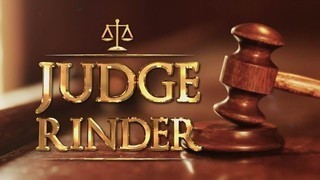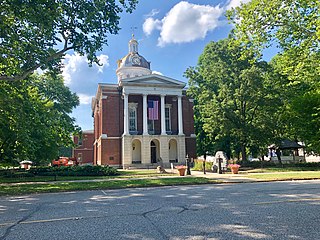Jury instructions, also known as charges or directions, are a set of legal guidelines given by a judge to a jury in a court of law. They are an important procedural step in a trial by jury, and as such are a cornerstone of criminal process in many common law countries.

A jury trial, or trial by jury, is a legal proceeding in which a jury makes a decision or findings of fact. It is distinguished from a bench trial in which a judge or panel of judges makes all decisions.

A jury is a sworn body of people (jurors) convened to hear evidence, make findings of fact, and render an impartial verdict officially submitted to them by a court, or to set a penalty or judgment.
The Courts of England and Wales, supported administratively by His Majesty's Courts and Tribunals Service, are the civil and criminal courts responsible for the administration of justice in England and Wales.

The Crown Court is the criminal court of first instance in England and Wales responsible for hearing all indictable offences, some either way offences and appeals of the decisions of magistrates' courts. It is one of three Senior Courts of England and Wales.
A bench trial is a trial by judge, as opposed to a trial by jury. The term applies most appropriately to any administrative hearing in relation to a summary offense to distinguish the type of trial. Many legal systems use bench trials for most or all cases or for certain types of cases.

The Criminal Court of the City of New York is a court of the State Unified Court System in New York City that handles misdemeanors and lesser offenses, and also conducts arraignments and preliminary hearings in felony cases.
Jury selection is the selection of the people who will serve on a jury during a jury trial. The group of potential jurors is first selected from among the community using a reasonably random method. Jury lists are compiled from voter registrations and driver license or ID renewals. From those lists, summonses are mailed. A panel of jurors is then assigned to a courtroom.

In the judicial system of Japan, the Constitution of Japan guarantees that "all judges shall be independent in the exercise of their conscience and shall be bound only by this constitution and the Laws". They cannot be removed from the bench "unless judicially declared mentally or physically incompetent to perform official duties", and they cannot be disciplined by executive agencies. Supreme Court judges, however, may be removed by a majority of voters in a referendum that occurs at the first general election following the judge's appointment and every ten years thereafter. The judiciary was far more constrained under the Meiji Constitution than it is under the present Constitution and had no authority over administrative or constitutional law cases. Moreover, the Ministry of Justice had complete and direct control over the courts' administrative affairs. Nonetheless, Professor John Haley argues that the courts maintained complete independence in the adjudication of particular cases. "Judicial independence from the political branches was emphatically established as a fundamental principle of governance in Article 57 of the Meiji Constitution. Of all branches of government only the courts exercised authority 'in the name of the Emperor'." Haley argues that this was and remains a matter of great pride for Japanese judges and notes that "placed prominently in all courtrooms was the inscription 'in the name of the Emperor' as a meaningful reminder to imperial officials and subjects alike that the Emperor's judges were not subject to political control or direction."

The Magistrates Court of South Australia is the lowest level court in the state of South Australia. The Magistrates Court, then known as the Court of Petty Sessions, was established in 1837, by the Court of Sessions Act 1837. It has both original and appellate jurisdiction and hears matters specified in the Magistrates Court Act 1991 (SA).

The court of assizes is the trial court which tries the most serious crimes in the judicial system of Belgium. It is the highest Belgian court with criminal jurisdiction; as such, it is the only Belgian court that can sentence someone to life imprisonment. The courts of assizes are not permanent courts; a new court of assizes is assembled for each new trial. There is a court of assizes in each of the ten provinces of Belgium, as well as one in the arrondissement of Brussels-Capital which is not part of any province. Further below, an overview is provided of the eleven courts of assizes and their seats. They are the only courts in Belgium for which the provinces are used as territorial subdivisions. They are also the only courts in Belgium that hold jury trials. The jury acts as sole trier of fact, but decides on the penalty together with the judges. The trial by jury of certain crimes is laid down in article 150 of the Belgian Constitution. The Belgian courts of assizes have the same origin as their French namesakes.

A bar table is a table in a common law courtroom at which advocates sit or stand. It is generally situated between the Bench and the well of the court, where the public sit. Advocates such as barristers sit facing the Bench with their backs to the well. Usually the witness box and, if there is one, the jury box, will be to the sides of the room, between the bar table and the bench.
United States criminal procedure derives from several sources of law: the baseline protections of the United States Constitution; federal and state statutes; federal and state rules of criminal procedure ; and state and federal case law. Criminal procedures are distinct from civil procedures in the US.
The Judiciary of Vermont is the state court system of Vermont, charged with Vermont law.

The Superior Court of Los Angeles County is the California Superior Court located in Los Angeles County. It is the largest single unified trial court in the United States.
The Virginia Circuit Courts are the state trial courts of general jurisdiction in the Commonwealth of Virginia. The Circuit Courts have jurisdiction to hear civil and criminal cases. For civil cases, the courts have authority to try cases with an amount in controversy of more than $4,500 and have exclusive original jurisdiction over claims for more than $25,000. In criminal matters, the Circuit Courts are the trial courts for all felony charges and for misdemeanors originally charged there. The Circuit Courts also have appellate jurisdiction for any case from the Virginia General District Courts claiming more than $50, which are tried de novo in the Circuit Courts.
A court show is a broadcast programming subgenre comprising legal dramas and reality legal programming. Court shows present content mainly in the form of legal hearings between plaintiffs and defendants presided over in one of two formats: scripted/improvised with an actor portraying a judge; or an arbitration-based reality format with the case handled by an adjudicator who was formerly a judge or attorney.

Judge Rinder is a British arbitration-based reality court show that aired on ITV from 11 August 2014 to 14 October 2020. The show depicts Robert Rinder as an arbitrator overseeing civil cases. Rinder began his career in criminal law in 2003. He is a barrister and wears his barrister robes while on the show, but does not wear the wig as is customary in the judiciary. Rinder is a practising criminal barrister at 2 Hare Court Chambers in London and this is made clear on the show. As with other related court shows that inspired it, such as Judge Judy, Judge Mathis and The People's Court, any awards handed down by Rinder are paid by the production company rather than the loser.

Court justice was administered during the seventeenth and eighteenth centuries in the territories that would become the United States subsequent to the American Revolution in buildings that comprised colonial, county, and municipal structures. The most common local and regional territorial unit for the administration of justice within the English colonies was the county. These structures were designed with varying degrees of size and sophistication based on local needs and budgets and were typically inspired by European precedents which comprised different arrangements of adjudicative, clerical, deliberative, and enforcement oriented spaces and rooms, and featured different architectural motifs and symbolic and functional accoutrements.

Nineteenth-century American county courthouse architecture was used in buildings designed to house judicial and administrative functions in styles such as Federal, Neoclassical, Italianate, Second Empire, and Romanesque Revival, which were adapted to local building materials and styles to accommodate local needs. Over the course of the nineteenth century, the typical American county courthouse became more specialized than its eighteenth century predecessor, featuring increased usage of interior passageways and multiple levels and stairwells to facilitate a greater level of formality to court proceedings than could often be achieved through earlier examples which were centered around a single room on the ground floor. The gradual replacement of courtroom fittings associated with the English common law with those associated with American adversarial statute law, along with the use of clock towers, statuary, turrets, domes, and other architectural features became increasingly central to the iconography of local American public life, which represented at once the ideal of equal and impartial justice before the law in criminal and civil disputes, as well as the more wealth based and paternalistic ideal of justice represented by such cases as probations of estates, recording of deeds and property boundaries, assessments of taxes, enforcements of debts, evictions, and transfers of slaves.


















